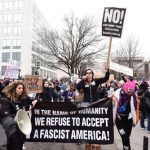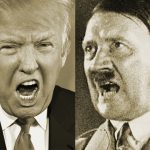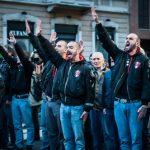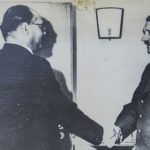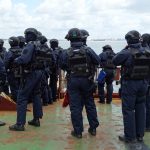Terrorism by the United States Goes Unpunished
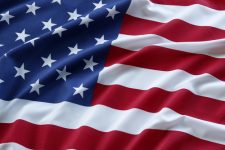
During his election campaign, much of Donald Trump’s rhetoric hearkened back to the United States’ isolationist policy of the early to mid-twentieth century. Today, it’s hard to believe that the world’s reigning superpower once tried to avoid getting involved in the globe’s most brutal bloodbaths.
The US became embroiled in the first world war after German submarines started carrying out attacks on US ships in 1917. The December 1941 Japanese attack on Pearl Harbour roped the States into the second world war.
Post world war two was a period that saw the decline in influence of the old colonial powers and a rise in American hegemony, which was further consolidated at the end of the cold war in the 1990s, with the fall of the Soviet Union.
But while the stars and stripes flag serves as a symbol of freedom and democracy for some, the US has been carrying out covert operations engineering the toppling of democratically-elected foreign governments that have been working for the empowerment of their own citizens.
Foreign-owned black gold
The US began its post-world war expansion of its sphere of influence with the CIA engineered overthrow of the democratically-elected Iranian prime minister Mohammad Mosaddeq on August 19, 1953.
With the support of the British M16, this act of “US foreign policy” had approval at the highest level, and was actually carried out to benefit the British, as the Iranian leader had just nationalised the British Anglo-Iranian Oil Company, later known as BP.
Mosaddeq’s overthrow led to 26 years of authoritarian rule under Washington’s puppet Mohammad-Rezā Shāh Pahlavi, also known as ‘the Shah’, and the consolidation of western oil interests in the country.
The Shah was overthrown during a 1979 revolution, which established a regime the Trump administration is threatening to attack today.
Latin America is our backyard
After its foray into Middle Eastern affairs, the US then turned its attention to the area of the world it’s come to consider as its backyard: Latin America.
In 1823, the US government drafted the Monroe Doctrine which essentially warned European powers to cease further expansion into the region south of the US border.
An early example of the Americans invoking this policy was in 1865, when they supported Mexican president Benito Juárez in a revolt against Emperor Maximilian, a French ruler.
Guatemalan hopes dashed
Jacobo Árbenz became the second democratically-elected president of Guatemala on March 15, 1951. He was a new hope for a predominantly agrarian society that had been living under the repressive policies of the US-backed dictator Jorge Ubico for decades.
Árbenz ran on a platform of land reform, the rights for workers to organise, expanded voting rights and legitimising political parties.
But the cause his downfall was his plan to confiscate the unused land owned by the United Fruit Company – a US corporation, with strong ties to then US Secretary of State John Foster Dulles – so it could be redistributed amongst the peasant population.
For this transgression, a US State Department and CIA-engineered coup was staged in 1954. It installed the authoritarian Colonel Carlos Castillo Armas as the president. Exiled Árbenz, hero to the nation’s poor, died of alcoholism in Mexico in 1971.
The Chilean September 11
The world’s first 9/11 was actually the Chilean September 11, 1973 coup. And although the US government denied its involvement for years, it was well-known and later proven that it was a major player in the incident that led to the establishment of the notorious General Augusto Pinochet as the nation’s leader.
Again, Chile was being run by a left-leaning democratically-elected politician, Salvador Allende, who had the welfare of the poorest strata of society in mind.
But there were tensions within the right-dominated Congress of Chile, and US president Richard Nixon openly declared he was carrying out economic warfare against the nation at the time.
A military junta was formed with Pinochet as the head. It ruled from 1973 up until 1990. The government, which had the full support of the United States, is said to have ‘disappeared’ 3,200 political dissidents, imprisoned 30,000 people and forced 200,000 Chileans into exile.
The Sandinistas
The Sandinista National Liberation Front was not a democratically-elected party when it came to power in Nicaragua in 1979. It was a left-wing revolutionary organisation that overthrew the repressive Somoza dynastic dictatorship that had been in power since 1936.
But once in power, the Sandinistas set about reforming the country with political and economic programs designed to democratise Nicaragua. They disbanded the National Guard, enfranchised the poor and in 1984 carried out the nation’s first democratic elections, which they won with 66 percent of the vote.
However, US president Ronald Reagan didn’t appreciate the Sandinistas. In 1981, he signed an executive order to overthrow the Nicaraguan government.
The US government secretly trained, funded and armed the Contras, a militant group based in Honduras, created to destabilise the Sandinistas. The US continued to train and fund the Contras even after the Sandinistas became the democratically-elected government of the country.
However, the Contras never succeeded in overthrowing the Sandinistas, and by the early 1990s the rebel group had disbanded.
Further atrocities
These examples of the United States attempting to, and often succeeding in, overthrowing other nations’ democratically-elected governments are hardly exhaustive.
As the US was trying to overthrow the Vietnamese government between 1964 and 1973 based upon the threat of communism, it also decided to discreetly bomb Laos.
And while this wasn’t an attempt to overthrow the Lao government, the US dropped so many devices upon the Southeast Asian nation that it’s known today as the most heavily bombed country in history.
The US air force flew 580,344 missions over Laos, dropping 260 million bombs in the process.
Then there are the invasions of Iraq – justified on knowingly false claims that the government of Saddam Hussein – a man who the US helped put into power – was harbouring weapons of mass destruction, and the ensuing bombings of Afghanistan – premised on the threat of terrorism.
Who’s next?
It remains to be seen which nation the Trump administration will take aim at next, but as already stated, he seems to have his sights set on Iran.
And what many don’t realise is that out of the seven nations Trump’s original Muslim ban incorporated – Iraq, Iran, Libya, Somalia, Sudan, Yemen and Syria – the US is currently bombing six of them.
So who are the real terrorists?



